
It’s tIme For traInIng to “move the needle” - Ken Cooper, Founder, CooperComm, Inc. OCTOBER 2022 • Vol.9 • No.10 Themed Edition on L&D Effectiveness and ROI (ISSN 2564-2014) 1712 25 34 4 Ways the right l&d Program Boosts Bottom line Performance - Jason Richmond, Ideal Outcomes, Inc Justifying leadership development during recession - Terence R. Traut, Entelechy how aligning l&d to Business objectives Is Key to delivering strong roI - Chris Tratar, Inkling the evolving World of roI For learning and development - Jennifer Lynn Larsen, WDHB
On the Cover
Content
10 The Mistake We All Are Making In Hiring… And Firing Our Coaches
Coaching is invaluable when qualified people implement the right method
- Jim Frawley, CEO and Founder, Bellwether Hub
15 How to Prove L&D Effectiveness
Through the Power of ROI
AR/VR can help L&D professionals prove ROI

21 Inexperienced Managers And Poor Training: A Recipe For Disaster
Managers should receive training in the federal and state laws that apply to the company’s business
- Paul O. Lopez, Director and COO, Tripp Scott, Jennifer H. Wahba, Associate with Tripp Scott
- Scott Stachiw, Vice President,
and Development, Roundtable Learning
30 Redefining Call Centers With Conversation Intelligence Poor onboarding programs leave potential value on the table
- Carthey Van Dyke, VP, Client Services, Gryphon.ai
39 L&D: Developing Remote Workforce Education company turns its strength inward to help employees grow
- Rosa Finelli, Executive Director, Learning and Development, Kaplan

Employee Learning & Development Excellence OCTOBER 2022 Vol.09 No.10 It’s time For training to “move the needle” Turning training into a true performance improvement tool - Ken Cooper, Founder, CooperComm, Inc. 07
I nde X (ISSN 2564-2014)
XR Design
Themed Edition on L&D Effectiveness and ROI
INDEX
4 Ways The Right L&D Program Boosts Bottom Line Performance



How to measure and get support for effective L&D strategies

- Jason Richmond, CEO and Chief Culture Officer, Ideal Outcomes, Inc.
17
Justifying Leadership Development During Recession
In the absence of industry-wide success metrics, demonstrating the bottom-line results of L&D initiatives is a growing issue - Terence R. Traut, CEO, Entelechy
25 34How Aligning L&D To Business Objectives Is Key To Delivering Strong ROI
Calculating L&D ROI the right way - Chris Tratar, Vice President, Marketing, Inkling
The Evolving World Of ROI For Learning And Development
Redefining ROI for a better future - Jennifer Lynn Larsen, Head, Leadership Development, WDHB
Top Picks 12
Editorial Purpose
Excellence Publications
edItor’s note
deepa damodaran

Employee Learning
Development
Justifying employee learning expenses the right Way

In the absence of an industry-wide success metric, demonstrating the bottom-line results of learning and development (L&D) initiatives is a growing issue. In fact, when it comes to the return on investment (ROI) of employee training programs, there is a large body of research that is quite critical of traditional training.
The impact of learning programs is more subtle and long–term than other investments, which calls for a robust and comprehensive set of metrics for assessment. There is, thus, a need for the ROI practices around L&D to evolve. This month we bring your a set of hand-picked articles, where they share their take on ‘Learning Effectiveness and ROI’.
“The biggest opportunity for generating real ROI for training actually begins at the very start of the training process when the training topics themselves are being determined,” notes author and training expert, Ken Cooper.
In an interesting take, Ken tells us where and what L&D professionals have been doing wrong in terms of tracking and measuring the ROI of employees’ L&D initiatives. Learn more about how companies can rectify this mistake in his article, It’s Time For Training To “Move The Needle”, featured on the cover this month.
As the world grapples with inflation, geopolitical turmoil, and the lasting impacts of the Covid-19 pandemic — organiza tions everywhere are taking long hard looks at the bottom line to see how they can reduce costs and increase employee engagement and customer satisfaction.
“Ironically, it is at those very times — when money’s tight, mission is fuzzy, and em ployees are restless — that we stop sup porting our leaders. Leadership develop ment initiatives (along with most training programs) are slashed due to cost-cutting and more urgent priorities,” points out Entelechy CEO Terence R. Traut. Terence, in his article Justifying Leadership Development During Recession, discusses how L&D professionals can recession-proof leadership development initiatives.
In another interesting read, The Mistake We All Are Making In Hiring… And Firing Our Coaches, coach and consultant, Jim Frawley, discusses what is bogging the coaching industry down, and why it is time to look at development programs through an ROI lens.
Ideal Outcomes’ Jason Richmond, in his article, shares the 4 Ways The Right L&D Program Boosts Bottom Line Performance. Also, read How Aligning L&D To Business Objectives Is Key To Delivering Strong ROI by Chris Tratar, and The Evolving World Of ROI For Learning And Development by Jennifer Lynn Larsen, among others.
That is not all! We bring you a handful of other insightful articles in this edition of Employee Learning & Development Excellence, and hope you find answers to your queries around employee learning and development that help you achieve excellence in our L&D initiatives.
Happy Reading!
Disclaimer: The views, information, or opinions expressed in the Excellence ePublications are solely those of the authors and do not necessarily represent those of HR.com and its employees. Under no circumstances shall HR.com or its partners or affiliates be responsible or liable for any indirect or incidental damages arising out of these opinions and content.
OR For Advertising Opportunities, email: sales@hr.com Copyright © 2022 HR.com. No part of this publication may be reproduced or transmitted in any form without written permission from the publisher. Quotations must be credited.
Our mission is to promote personal and professional development based on constructive values, sound ethics, and timeless principles.
Debbie McGrath CEO, HR.com - Publisher Dawn Jeffers VP, Sales Sue Kelley Director (Product, Marketing, and Research) Babitha Balakrishnan and Deepa Damodaran Excellence Publications Managers and Editors Employee Learning & Development Excellence Team Deepa Damodaran Editor Chinnavel Design and Layout (Digital Magazine) Chandra Shekar & Vibha Kini Magazine (Online Version) Submissions & Correspondence Please send any correspondence, articles, letters to the editor, and requests to reprint, republish, or excerpt articles to ePubEditors@hr.com For customer service, or information on products and services, call 1-877-472-6648 Employee Learning & Development Excellence (ISSN 2564-2014) is published monthly by HR.com Limited, 56 Malone Road, Jacksons Point, Ontario L0E 1L0 Internet Address: www.hr.com
Editor,
&
Excellence
debbie mcgrath
Publisher, HR.com Subscribe now for $99 / year And get this magazine delivered to your inbox every month Become a Member Today to get it FREE! SIGN UP Write to the Editor at ePubEditors@hr.com
how are our employee learning & development
employee learning & development excellence - monthly Interactive learning Journal
Training & Development Excellence - Monthly Interactive Learning Journal
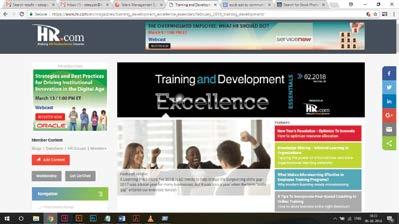
This monthly interactive learning experience showcases effective, learner-centered technologies and content to facilitate the formal and informal transfer of the latest e-learning knowledge, information and skills in today’s workplace.
Training and Development Virtual Events
employee learning & development - virtual events

Virtual events in the Employee Learning and Development track help you stay on top of the latest training, development and assessment techniques in order to maintain a competitive edge in the marketplace. Develop your skills, concepts, and attitude changes, and gain more knowledge to enhance performance. Training is crucial for organizational development and its success which is fruitful to both employers and employees of any organization. Some important benefits of training and development include: Increased productivity, Less supervision, Job satisfaction and Skills development. Each Virtual Event consists of up to 10 credit webcasts.
Virtual events in the Training and Development track help you stay on top of the latest training, development and assessment techniques in order to maintain a competitive edge in the marketplace. Develop your skills, concepts, and attitude changes, and gain more knowledge to enhance performance. Training is crucial for organizational development and its success which is fruitful to both employers and employees of any organization. Some important benefits of training and development include: Increased productivity, Less supervision, Job satisfaction and Skills development. Each Virtual Event consists of up to 10 credit webcasts.
Training and Development Webcasts for Credit
employee learning & development - Webcasts for Credit
HR.com webcasts deliver the latest Training and Development industry news, research trends, best practices and case studies directly to your desktop. Webcasts are available live online with a downloadable podcast and a copy of the slides (PDF) available before and after each webcast. Earn all of the required recertification credits for aPHR, PHR, SPHR, GPHR, and SHRM Certifications. HR.com’s one-hour webcasts, in every HR specialty including HRIS and Payroll, are pre-approved for HRCI and SHRM credit (excluding Demo webcasts).
Training and Development Community
employee learning & development - Community
Join almost 13,000 HR.com members with a similar interest and focus on Training and Development. Share content and download research reports, blogs, and articles, network, view educational webcasts, and “follow” peers and have them “follow” you in a social network platform to communicate regularly and stay on top of the latest updates. This well established Training and Development Community is an invaluable resource for any HR professional or manager.
How are our Training & Development Products and Services helping to make you smarter?
SEP 2017 Vol. 5 No. 09 Use these invaluable Training & Development resources today! For more information phone: 1.877.472.6648 | email: sales@hr.com | www.hr.com Employee Learning & Development
In a world of unparalleled challenges (global pandemic, racial injustice, politi cal rivalry, digital 4.0, emotional malaise), uncertainty reigns. Finding opportu nity in this context requires harnessing uncertainty and harnessing starts with reliable, valid, timely, and useful information. The Excellence publications are a superb source of such information. The authors provide insights with impact that will guide thought and action.
dave Ulrich
Rensis Likert Professor, Ross School of Business, University of Michigan

Partner, The RBL Group
Excellence publications are my ‘go-to’ resource for contemporary and action able information to improve leadership, engagement, results, and retention. Each edition offers rich and diverse perspectives for improving the employee experience and the workplace in general.


 Julie Winkle giulioni
Julie Winkle giulioni
Author, Virtual /Live Keynote Presenter, Inc.’s Top 100 Leadership Speakers

I regularly read and contribute to Leadership Excellence and Talent Manage ment Excellence. I use many of the articles I read to augment my own presen tations and I often share the articles with my clients. They are always quick, right on target for the latest issues in my field, and appreciated by my clients.

If you want to stay up to date on the latest HR trends, choose a few of the dif ferent issues from the Excellence series of publications.


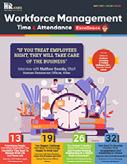


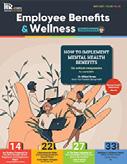



dr. Beverly Kaye
CEO, BevKaye&Co.

We’re eager to hear your feedback on our magazines. Let us know your thoughts at ePubEditors@hr.com WHY EXCELLENCE PUBLICATIONS?
It’s t ime For training to “move t he needle”
turning training into a true performance improvement tool
By Ken Cooper, CooperComm, Inc.
When it comes to ROI, there is a large body of research that is quite critical of traditional training. It has been a steady theme for decades. Here is a sample of typical comments through the years:
● Transfer of Learning: Cognition, Instruction, and Reason by Robert Haskell: “Most of the research on employee training clearly shows that although millions of dollars are spent on training, there is little empirical evidence linking training to improved job behavior or employee attitudes.” (2000)
● The Kirkpatricks wrote about it in their 2010 book where the title says it all, Training On Trial: How Workplace Learning Must Reinvent Itself to Remain Relevant. (2010)
● McKinsey & Company: “75% of training programs fail to contribute to the success of the business.” (2010)
● Today show’s Allison Linn in a still relevant comment: “Many employers these days see training as a last resort, believing that they shouldn’t have to spend money on training when there are so many unemployed people out there.” (2012)
● A Forbes article by Ann Latham was titled, “8 Reasons You Are Wasting Your Time and Money on Training.” (2017)
A Harvard Business Review article by Steve Glaveski: “Only 12% of employees apply new skills learned in L&D programs to their jobs.” (2019)
You can argue that it has not gotten any better, with many organizations ceasing training altogether due to Covid.
There are many solutions to address this ROI disconnect, including improving instructional design, delivery techniques, after-training leadership support, and so on. But perhaps the biggest opportunity for generating real ROI for training actually begins at the very start of the training process when the training topics themselves are being determined.
But first, an important lesson.
It’s Payback, not roI
In many organizations, ROI is the wrong measure for justification. Trainers will say, “This project generates a 15% ROI over five years.” The problem is, leaders are not interested in classic ROI, i.e., percentage returns over multiple years. They may be in a different job by then, or working at a different organization. So who cares?
Leaders are seeking immediate results that tie into their annual performance goals (and bonuses.) What they are asking is, “How can I spend a dollar today
Employee Learning & Development Excellence presented by HR.com October 2022 7 Submit Your Articles
Cover artICle
and get more than a dollar back before the end of the fiscal year?” Offer short-term payback, and you will have the attention of the people with the checkbooks.
to-dos to Justify training
It’s time to get out of the “Training is an important function” game and into the “Training made $XXX dollars for the organization” game.
1. Get real. Training isn’t a necessity. You have to earn your keep every year.
2. Change your mindset. You’re not in the training business. You’re in the needle-moving business. As far as leadership is concerned, training is nothing more than a Swiss Army Knife of profitability. Leaders do not care if you are doing it with training or wormholes in space. You are simply a tool to drive results.
3. Start every discussion on training with questions that identify the payback:
● What strategic initiative are we addressing?
● What needle (KPI/key performance indicator) are we training to move?
● Where is it now?
● Where does it need to be?
● What must people do differently to get it there?
● How soon does it have to happen?
● What is the dollar benefit when it does?
Yes, there are training projects that are must-dos for long-term or legal reasons. But it is this highly tactical training that will keep your budget numbers healthy.
4. Continually analyze your results. This is your ammo when it is time to discuss budgets. That means you need to do more than just train people

Employee Learning & Development Excellence presented by HR.com October 2022 8 Submit Your Articles
It’s Time For Training To “Move The Needle”
and turn them loose. You are going to need to include after-event application learning and measurement in your learning system design.
5. Communicate what you have accomplished to management. You should not begin your training annual update presentation with a list of your programs and student-days delivered. You should begin with your payback results.
here’s What’s Possible
An agriculture company was in a five-year decline in revenue. It was a “last one out turn off the lights” situation” if this continued. The Western Region Director of Sales funded the creation of a new online training system for dealers. It consisted of 20 short, fun, TV-style video programs focused on one thing— Get new customers! It was very tactical, say-this/ do-this training.
It was a huge success. After one buying season:
● New customers went from 565 the previous year to 4,615 (versus the all-time high of 1,650.)
● Sales increased 22% to a new all-time record, reversing all previous declines.
● 35% of orders included a high-margin seed treatment add-on, versus an industry average of under 4%.
● New dealer sign-ups went from 150 to 370, and dealer resignations dropped from 90 to 30.
● Customer satisfaction improved one full point on a five-point scale.
What made this particularly powerful was that the Eastern Region chose not to utilize the training. They remained at 300 new customers and a 4% treatment rate. So there was a control group situation which helped establish training as a key differentiator.
What is also interesting is that while this was pre-Covid, it was a Covid-like environment because the targeted learners were remote salespeople working from their homes. So it is still applicable to today’s conditions.
The ultimate results? In the first year alone, the additional new customers created a 70-times one-year payback on the training investment. Plus, the ripple-through effect of these new sales generated tens of millions of dollars in margin over three years, all for a six-figure investment in training. As you can imagine, the Western Regional Director was soon promoted to VP of Sales, and the training was expanded.
summary
It’s time to get away from the “Training is an important function” philosophical dead end and into the “Training just made $XXX for us” game. You do that by focusing on tactical how-to training that specifically supports one or more of the organization’s key annual initiatives, and that drives agreed-upon KPIs.
Imagine starting your annual update presentation with, “This year the training department completely paid for itself by May 20th. Everything after that was profit to the organization totalling $XXX.” That’s the kind of ROI (payback) required to keep your training budget dollars flowing.

Ken Cooper is the Founder of CooperComm, Inc. He has conducted over 2,500 seminars, appeared on satellite TV for Anheuser-Busch and Apple, and has created over 1,000 video-based online training programs. Ken is the co-author of Taming the Terrible Too’s of Training and The Control Catastrophe, and the author of Effective Competency Modeling & Reporting, The Relational Enterprise, BodyBusiness, and Stop It Now.
Would you like to comment?
Employee Learning & Development Excellence presented by HR.com October 2022 9 Submit Your Articles
It’s Time For Training To “Move The Needle”
t he mistake We all are making In hiring… a nd Firing our Coaches
Coaching is invaluable when qualified people implement the right method
By Jim Frawley, Bellwether Hub
Irecently found myself in a conversation with the Head of Field Development at a very large bank. We were discussing coaching and employee development programs, when he shared that they had made the decision to fire all of their coaches and completely terminate the program. Another unfortunate instance of a suffering reputation for coaching professionals.
When I inquired as to why, his response was neither surprising nor unjustified. His organization was losing money on the investment. Not only were they paying outlandish amounts of money to these coaches, but they also found that the people participating in the program were performing worse in comparison to their colleagues who opted out, on top of losing productivity time in exchange for partaking in this development venture.
I must admit, even as a self-proclaimed coach, I had to agree with his assessment, but then immediately and candidly informed him he had no one to blame for this outcome but himself. Ignoring the fact that this program was grossly overpriced, there was absolutely zero accountability on the coaches, and even worse, the employees receiving the coaching as well. The program was marketed and sold based on appealing promises, with no follow-through on delivery.
This is most certainly not the first or only instance of this “Fire All Coaches” movement. And those of us who not only represent but advocate for the industry and profession, have got to answer the call and amplify voices to right the ship. Historically, coaching has been called the Wild, Wild West. There are no rules, no accountability, nor a true governing body. Have you ever heard the saying, “If you can’t do, then teach!” It has now evolved to continue, “and if you can’t teach, then coach.”
Let’s set the record straight - coaching is invaluable when qualified people implement the right method. But this coincides with the reality that coaching also has a reputation issue.
Despite the suffering reputation, the economy is surviving amidst some erratic trends in the job market, which may have something to do with a massive com moditization in the coaching world. LinkedIn reported that 78% of top companies in the U.S. in 2022 are investing in coaches for their employees - this list is inclusive of big names like Amazon, Deloitte, and Apple.
These organizations are scrambling to offer professional development incentives for their
Employee Learning & Development Excellence presented by HR.com October 2022 10 Submit Your Articles
employees as an effort to improve retention rates, or even to provide a ‘safe space’ to vent, to feel heard and seen. This begs the question - and places a spotlight on the issue - why bother to find an outlet to make an employee feel heard or seen if there is no follow through? If the commitment is not fully there, it is simply a bandaid that lacks thought, research, and purpose.
When identifying an impactful coach, we are looking for value as defined by a clear ROI on the development of those being coached. There is a lot of noise in the coaching world that we have to filter, whether it is a fancy app, or heavy marketing with light substance. I fear companies are falling for these superficial campaigns, and then throwing unnecessary amounts of money at deeply rooted issues, hoping for a quick fix. But remember this - is there truly ever an industry in which you can claim expertise with zero substance behind that claim?

We are redefining this movement. Let us not “fire all coaches.” Rather, let us look at development programs through an ROI lens. What exactly is the return on investment of developing your people? How are you measuring this development? How are you holding these employees accountable for their efforts towards growth and development? And, most importantly, what
are the service-level agreements and expectations for the coaches receiving your monetary investment?
We have a long way to go as the coaching industry grows and evolves. Consider when you make similar investments, in technology, equipment, branding, you have an expectation for the end product, result, or deliverables. It is time for coaching programs to answer to the same level of accountability.
Jim Frawley is a Coach, Consultant, and the CEO and Founder of Bellwether Hub. Jim is an expert at turning around businesses and developing talent. He’s the author of best-seller, “Adapting in Motion,” hosts a weekly podcast and travels nationally to give speeches on professional development.
Would you like to comment?

Employee Learning & Development Excellence presented by HR.com October 2022 11 Submit Your Articles The Mistake We All Are Making In Hiring… And Firing Our
Coaches
4 Ways t he right l& d Program Boosts Bottom line Performance
how to measure and get support for effective l&d strategies
By Jason Richmond, Ideal Outcomes, Inc.
The potential return on investment (ROI) of an effective learning and development program is a critical factor across the board for business success.
Company awareness of the need is reflected in the fact that the workplace training industry worldwide

was estimated to post a market size of $370 billion in 2019.
Unfortunately, unlike most critical areas of business management and growth, there’s no standard industry framework for recognizing or planning ROI for learning and development teams.
Employee Learning & Development Excellence presented by HR.com October 2022 12 Submit Your Articles
top Pick
L&D Program Boosts Bottom Line Performance
Leaders in L&D often find it difficult to quantify and present the benefits that become available from a strong ongoing learning and development program, or to justify the need to invest corporate dollars into it.
In this article, we’ll take a look at some of the key ROI benefits associated with learning and development, how they can best be measured and presented, and ways that L&D managers can overcome these challenges and gain support for their programs.
What is l&d?
Learning and development, as it applies to business functions, is a specialized HR process by which employees are taught specific skills related to their responsibilities within the company, are upskilled with new and improved processes, and are empowered to perform better and with greater efficiency.
Predictions from the World Economic Forum suggest that investments in upskilling and reskilling of employees will increase global GDP by $6.5 trillion by 2030
However, performance is not the only outcome of L&D, nor is it the only metric by which it should be measured. Additional benefits, including improved employee retention and satisfaction, and keeping a business current with the latest technologies and processes, are also significant results of a successful learning and development program. Each of these can help grow overall ROI, as well.
L&D, sometimes referred to as a company’s “talent management strategy” leverages the power of learning and skill development to maximize employee value, improve efficiency in business processes, and retain the best and brightest.
l&d effectiveness and Benchmarks
An effective L&D program focuses on targeted training to improve ROI, so it’s important to first identify exactly what areas of the employee’s work strategy can be improved or upskilled for maximum impact.
Once these are identified, an effective training plan can be developed and implemented to target those specific areas, with quantifiable benchmarks for each.
Having these benchmarks, or learning analytics, not only allow you to monitor the success of individual L&D training and its effect on the ROI, but also help to identify areas that can be strengthened and improved upon in future training. Tracking these training benchmarks can also help identify areas in training that do not result in positive learner engagement.
By recognizing these and working to improve those specific areas of training, companies not only improve control of the learner’s experience and outcomes, but also ensure (and can report) optimized allocation of resources and improved return-on-investment for those providing program approval and funding.
One challenge when trying to track ROI in a learning & development program is that, too often, these types of initiatives are viewed more as a benefit being offered to employees than a critical investment in the company’s efficiency and future success. This is because it can sometimes be difficult to “connect the dots” between a training activity and a quantifiable business outcome that may be achieved months, or even years down the road.
L&D is not an employee benefit (at least not solely) like healthcare or PTO.
Instead, it must be recognized as a key and strategic business investment, and its metrics tracked and reported on as any other major investment would be.
Some of the traditional metrics that can be monitored may include talent mobility, productivity, employee retention, turn-over, and, of course, measurable return on investment. Let’s take a closer look at each of these metrics:
talent mobility Talent mobility refers to employees’ ability to transition between positions and responsibilities within the organization, learning and improving the aspects of each.
Employee Learning & Development Excellence presented by HR.com October 2022 13 Submit Your Articles 4 Ways The Right
L&D can track:
● The training that employees have received
● The additional responsibilities that these pieces of training have allowed them to take on
● The projects or outcomes accomplished by these additional or new responsibilities.
Talent mobility tracking can be a strong indicator of L&D performance, especially over the long term.
employee Productivity
The amount of work that an employee can accomplish within a set timeframe is referred to as their productivity.
By tracking productivity in identical or similar projects both before and after training, L&D managers can compare and contrast the amount of time and resources spent. Any productivity improvement (reduction in time spent or resources required) based on an improved understanding or use of new skills, can be considered a direct indicator of ROI from that training.
retention and turnover
Employee retention indicates how long an employee stays with the company, or in a specific department of the company, and is often an indicator of employee satisfaction.
Conversely, turnover is the loss of employees within a workforce over time whether they quit or are terminated.
In most industries, it’s far more expensive to replace a previously trained employee with a new, untrained one. In fact, according to a report by Employee Benefit News, companies spend an average of 33% of an employee’s annual salary to replace just one employee.
Employees who participate in training and new skills education, especially when that training leads to a better position or additional pay, are often more likely to stay with a company for a much longer period.
By comparing the number of turn-overs between employees who have, and have not, participated in targeted L&D training, a company can see the effect of training and promotion on employee retention and turnover.
The bottom line: Employee retention equates to positive ROI.
measurable roI
A successful and effective L&D program will typically make a noticeable impact on a business’s bottom line…if you know where to look.
One of the best ways to track ROI to a specific program or training is to “reverse engineer” increases in profits or decreases in expenses. In other words, follow the money.
Often, this process will end up highlighting an improvement in efficiency, or a reduction in time, labor cost (hours), or waste that is the direct result of improvement or new skills training.
It’s especially important for L&D leaders to watch for these changes in the weeks or months following major training initiatives and have this verifiable data at hand for ROI reporting.
Smart businesses proactively invest in their own success and are constantly searching for areas of improvement and increased efficiency. The ability to quantify L&D’s effectiveness and impact on positive ROI makes it easier for companies to understand the importance of, and continue to invest in, their own learning and development programs.
Jason Richmond is CEO and Chief Culture Officer at Ideal Outcomes, Inc.
Would you like to comment?

Employee Learning & Development Excellence presented by HR.com October 2022 14 Submit Your Articles 4 Ways The Right L&D Program Boosts Bottom Line Performance
how to Prove l& d effectiveness t hrough the Power of roI
ar/vr can help l&d professionals prove roI
By Scott Stachiw, Roundtable Learning
Learning and development (L&D) have been transformed over the past two years. The days of strictly training employees with in-person training sessions are in the past, and remote training has become evermore important as budgets for L&D programs are tighter than ever.
While training employees remains essential, organization executives are looking at how to measure return on investment (ROI) for L&D. Traditional training does not always provide hard data about its effectiveness and show the tangible benefits the organization is receiving from the training. That is why the interest in augmented reality/virtual reality (AR/VR) programs has skyrocketed over the past two years.
As technology has evolved, new modalities have emerged that give L&D professionals the ability to
measure and track a program’s effectiveness more closely than ever before. Making the shift to these newer technologies will allow L&D programs to prove their worth and highlight their extensive contributions to the organization’s bottom line.
how training has shifted (and Why)
Before the Covid-19 pandemic struck, much of the training done by organizations was done in person. Employees would gather in a classroom and be taught by an in-person instructor, using in-person role-playing to teach hard and soft skills. In-person training also allowed for immediate feedback from colleagues and instructors. The Covid pandemic, however, forced more workers than ever before into remote working situations. Strict health guidelines kept people from gathering in one
place, making in-person training less possible.
As remote work became more popular, with fewer offices returning to work full time, training in person has become even more of a challenge. Alternative training options were necessary because training still needed to continue even without the in-person component. AR/VR modalities, when built with partners who understand the business, can deliver training in ways that are more flexible and fit into the lives of employees more effectively.
AR/VR training allows employees to complete their training from wherever they are, improves the consistency of the training and allows them to take risks in a safe, immersive environment. This allows them to make mistakes without real-world consequences and learn the proper way to handle situations accordingly.
Employee Learning & Development Excellence presented by HR.com October 2022 15 Submit Your Articles
Furthermore, AR/VR training has evolved to the point that it can be done using the employee’s own mobile phone using cardboard headsets that cost a fraction of the more traditional AR/VR headsets. When employees can train from the comfort of their own homes using technology they are familiar with, it can increase participation and improve retention over more traditional in-person learning.
Beyond the effectiveness of the training, AR/VR training provides more detailed feedback, which can be used to shift the training as necessary to provide individualized training to specific employees. More importantly, it can provide hard data that can be used to prove the ROI to company executives, who have to decide whether to invest in the training or not.

how ar/vr helps l&d Professionals Prove roI
Unlike traditional training feedback, which is often
As more of these AR/VR programs are implemented across various types of training, the ROI becomes even more apparent. Once the equipment is in-house, updating the training is much easier, and it can shift quickly to keep up with changing training needs as they develop. In other words, the ROI increases the more an AR/VR system is used.
the Bottom line
subjective, AR/VR training provides hard data that can be measured against past performance to determine effectiveness. For example, if the training is technical in nature, executives should expect to see a reduction in errors in the task performed. This will allow executives to decide whether the investment in AR/VR equipment, which can be extensive at first, is worth it.
In more complex training, like diversity, equity, and inclusion (DEI) or leadership training, the ability to measure success becomes even more important. Organizations are turning to AR/ VR training for these soft skills and others to allow insights into the effectiveness of such training. Using benchmarks against industry standards provides organizations with the ability to understand how they compare to their peers in the industry and how they can improve in granular detail, which is not possible with traditional training modalities.
As training has shifted over the past two years, the ability for L&D professionals to prove the ROI of their programs has become easier. The use of AR/ VR equipment offers them the ability to measure success at a granular level and transmit that information to organizational executives. Finding the right partner who can provide the support and expertise in AR/VR training development is crucial to your success.
Scott Stachiw is Vice President of XR Design and Development at Roundtable Learning.
Would you like to comment?

Employee Learning & Development Excellence presented by HR.com October 2022 16 Submit Your Articles
How
to
Prove L&D Effectiveness Through the Power of ROI
Justifying leadership development during recession
In the absence of industry-wide success metrics, demonstrating the bottom-line results of l&d initiatives is a growing issue
By Terence R. Traut, Entelechy
Leading is easy when times are good, the economy is growing, and employees are engaged and fulfilled. Leadership is tested when times are tough, business is down, the future is uncertain, and employees are frightened.
The good news is that you can recession-proof your leadership development initiatives by showing the true business impact of developing stronger leaders as well as aligning future leadership development programs directly with your organization’s broader business objectives.

Employee Learning & Development Excellence presented by HR.com October 2022 17 Submit Your Articles
top Pick
As the world grapples with inflation, geo-political turmoil, and the lasting impacts of the Covid-19 pandemic — including The Great Resignation, The Great Shuffle, and Quiet Quitting — organizations everywhere are taking long hard looks at the bottom line to see how they can reduce costs and increase employee engagement and customer satisfaction.
Ironically, it is at those very times — when money’s tight, mission is fuzzy, and employees are restless — that we stop supporting our leaders. Leadership development initiatives (along with most training programs) are slashed due to cost-cutting and more urgent priorities.
In case, you don’t remember the last recession or were not in the working world when it happened, check out this February 2009 article from ATD for some interesting historical context.
Of course, righting the ship is critical to the long-term (and even short-term) viability of the organization, so, of course, leaders need to spend time leading. But why can not we continue to support them as well?
Many organizations rely on external vendors to ad dress their leadership development needs. This ap proach may work well when cash is available but not so well when the purse strings tighten. And when the leadership development programs disappear, leader ship capability disappears along with it … at the very time, it is needed most.
So, how do we ensure that our leadership develop ment programs are highly valued at every level of the organization — from training participants all the way up to the C-suite?
Redefine How You Measure Success
According to LinkedIn’s 2022 Workplace Learning Report, nearly three-fourths of L&D leaders agree that L&D has become more influential over the past year. In fact, 74% of survey respondents agree that L&D has become more cross-functional and 72% stated that L&D has become a more strategic function at their organization.
On top of that, we have also seen L&D incorporate many new, meatier, and loftier business-critical

Employee Learning & Development Excellence presented by HR.com October 2022 18 Submit Your Articles
Justifying Leadership Development During Recession
topics into leadership development programs, includ ing inclusive leadership and DE&I, crisis communica tion, change management, innovation, resiliency, and agility, among others.
At the end of the day, it is important to recognize that the change most organizations are seeking by cover ing these critical leadership topics is impossible to measure on a per class or even per program basis.
And yet, most L&D teams continue to measure suc cess the same way they always have: qualitative feedback from post-program surveys and quantitative stats from course completion data. All too often we talk about intangible benefits like a strong corporate culture, or an upswing in employee morale that could be the result of any number of factors. Or, we cite program stats like the total number of program partici pants, or classroom/online training hours logged that sound impressive, but don’t truly ladder back to the bottom line.
As a former corporate L&D manager, I know how relatively easy it is to measure what we measure and how challenging and messy it is to measure things that actually mean something to the business. But measuring what we can rather than measuring what we should is just going to sell our programs short.
14 Ways to measure leadership development roI
Since we are often asked about the best ways to measure the success of leadership development programs, we’ve compiled everything into one place for easy reference. Without further ado, here are 14 business-oriented categories to include in your next leadership development measurement plan, along with specific metrics to track for each bucket:
leader assessments
1. Leader retention and loyalty. Has retention increased for participating leaders? What recruiting and replacement costs have been avoided by retaining effective leaders?
2. Leader promotions. Have promotions increased for leaders who have completed the program?
Are they recognized in other ways for increased performance and competencies (possibly additional responsibilities, increased mobility between departments/geographies)?
3. Skill mastery, transfer, and business impact. Do the pre- and post-training assessments show an increase in the leader’s mastery and on-the-job application of key skills? And, how have those skills improved quality, increased efficiency, increased compliance/safety, improved employee retention, and increased innovation?
team assessments
4. Employee retention and loyalty. Has employee turnover decreased on the participating leader’s team? Is the leader retaining more high potential employees? What recruiting and onboarding costs has the organization avoided by retaining strong talent?
5. Employee promotions. How many employees on the participating leader’s team have attained a promotion due to an increase in the leader’s performance or effectiveness?
6. Customer impact. Has the team’s Net Promoter Score or Customer Experience score improved? Has the group increased sales or customer satisfaction?
7. Productivity. How have Key Performance Indicators (KPIs) and business metrics (average handle time, quality, errors, time to resolution, etc.) been impacted by the application of the skills learned in the training?
organizational assessments
8. Innovation and growth. Has the leader or the leader’s team generated actionable innovations for the company? Have they generated revenue? Has the organization increased its product offerings, geographic footprint, or market share as a result of those innovations?
9. Awards. Can you link your leadership development to any awards or recognition the company has achieved?
Employee Learning & Development Excellence presented by HR.com October 2022 19 Submit Your Articles
Justifying Leadership Development During Recession
Leadership Development During Recession
Good designers ask…
1. What’s the problem we’re addressing?
2. What are we trying to achieve?
3. Who currently performs this skill the best?
4. What’s the potential size of the audience?
5. What’s your budget?
GREAT designers then ask…
What do you estimate the cost associated with not addressing the prob lem? If we were to eliminate or reduce the problem, how much would we save?
What might be the monetary impacts if we successfully achieved this?
How much more are they earning, selling, producing, servicing, retaining, etc. than others?
What is the total potential cost/monetary upside (multiply 1 or 2 with 3 and 4)?
Here’s your potential ROI.
10. Bench strength. Has your company been able to quickly fill open positions internally due to a larger pool of qualified leaders?
11. Increased engagement. Has there been an increase in the number of employees who say they are committed to their work and the broader organization as a result of connecting more with their leader and their team?
12. Mentoring. Are your leaders mentoring more employees? Is there an increase in mentorship requests? When mentoring thrives, the investment in leadership development is transferred from leader to future leader.
13. Succession planning. Does the organization’s succession plan include leaders developed through your program?
14. Prestige and perception. Are your leadership development programs used to attract desirable leadership candidates, thereby reducing recruiting costs?
design with roI in mind
It’s one thing to more accurately measure the impact of existing leadership development programs, but what if we actually designed courses that focused on what we’re measuring? Can you imagine designing a course with the sole intention of getting great feedback from attendees? (I’m sure it would include cake, refreshments, and lots of breaks!) Or a course developed solely to keep participants online as long
as possible? (I’m thinking a program with tons of gamification tactics and engagement incentives.) If our measures indicate what’s important, we need to rethink our design.
Here’s a suggestion, one straight from a training ven dor who relies on ROI for a living. Don’t wait until the training is designed, developed, and implemented to consider ROI. Make ROI a part of the design process.
This mindset applies to any L&D initiative, including those that seem squishy like leadership development, which we know will continue to be a high priority for organizations as we all continue to navigate our next normal together.
Terence R. Traut is the CEO of Entelechy Would you like to comment?

Employee Learning & Development Excellence presented by HR.com October 2022 20 Submit Your Articles
Justifying
Inexperienced managers and Poor training: a recipe For disaster
managers should receive training in the federal and state laws that apply to the company’s business
By Paul O. Lopez and Jennifer H. Wahba, Tripp Scott
Acompany's management team is entrusted to oversee day-to-day operations including, but not limited to, internal workplace issues, such as compliance with a number of employment-law related statutes and regulations.
Key experience in these areas is essential to properly mitigate
against a company's potential exposure. As of August 2022, while the unemployment rate in the United States rose to 3.7%, the labor force participation rate also increased slightly.1
What is concerning is that given the recent tight labor market,2 many companies and small
businesses are being forced to hire inexperienced employees to fill such senior management positions, which undoubtedly will lead to potentially significant exposure for these organizations.
Generally, management positions should be filled by individuals, who have the proper training

Employee Learning & Development Excellence presented by HR.com October 2022 21 Submit Your Articles
and experience in the industry so that they can avoid legal pitfalls under relevant state or federal laws. Managers may be responsible for making decisions, creating efficient processes, and motivating their teams to perform at their best.3
Perhaps one of the most important roles of being a manager is ensuring that the company is complying with its legal obligations as they relate to employees.

For example, depending on the number of employees a company has and whether its employees are eligible, the company may be bound by several federal laws: (1) Title VII of the Civil Rights Act of 1964 (“Title VII”), which prohibits discrimination against employees based on several protected classes, including race, sex, and religion;4 (2) the Family and Medical Leave Act (“FMLA”), which allows employees
to take unpaid family or medical leave with continued health insurance coverage;5 (3) the Fair Labor Standards Act (“FLSA”), which requires employers to pay minimum wages and overtime pay;6 and (4) the Occupational Safety and Health Act of 1970 (“OSHA”), which prescribes certain minimum safety and health standards for workers.7
Aside from these limited examples of federal laws, each company will be regulated by its own state’s laws. If the company has employees working in several states, the company should be advised that it may also be bound by several states’ laws, which may sometimes conflict with each other.
A manager should also be aware of some other general legal principles found across all states’ laws: respondeat superior, which is a theory that allows a company to be held liable for the negligence
of its employees; and general negligence, including negligent hiring, retention, or supervision, which requires a company to exercise a certain standard of care in all its business, including in hiring and supervising employees. And while not every state may have codified laws on certain topics, companies should also ensure that they have adequate policies in place for other areas that may lead to litigation, such as employee management of funds; bookkeeping and document retention; mental-health policies; and cybersecurity and data breaches.
Consequently, managers should receive basic and, ultimately, advanced training in the federal and state laws that apply to the company’s business. As best practices, managers should have a general understanding of which employees are eligible under which laws, whether the company has a required reporting process for alleged legal violations, how the company investigates and ultimately deals with employee reports or grievances, and a follow-up process with employees to assuage their concerns. Without this proper training—or without the experience in how these polices work as a practical matter—managers risk exposing the company to liability for failing to comply with the law or for having inadequate safeguards in place.
Even if the manager is not the proper person to address employees’ complaints, the
Employee Learning & Development Excellence presented by HR.com October 2022 22 Submit Your Articles
Inexperienced Managers And Poor Training: A Recipe For Disaster
manager should be able to direct employees to the proper point of contact. Though not feasible for small businesses, if possible, more than one manager should be well-versed in the fundamental basics of the company’s legal obligations, either through the company’s own legal department or by outsourcing the training to some other entity that can provide adequate training.
Senior executives should also establish checks and balances on managers’ duties. When employees face a problem in the workplace, they are much more likely to go directly to a supervisor than to executive management. In fact, it’s possible that executive management may never hear of certain employee complaints. Although senior executives need not be informed of every single complaint occurring in the company’s day-to-day affairs, they should establish a clear line
of communication that ensures that management is properly performing its role in the legal context.
For example, during performance reviews, managers themselves may be evaluated on their ability to stay current on legal developments that affect the employees. If managers have already been hired without the ideal level of experience, then senior executives should budget for in-house or outsourced courses or programs to train managers on the basics of legal compliance in the industry. Lastly, senior executives should focus on prevention, not just correction, of legal issues. Potential legal blind spots should be assessed before a problem arises, and managers should likewise notify senior executives when they see potential areas of concern.
While these steps may seem costly at the outset, they will likely
save the company hundreds of thousands of dollars in the long run in avoiding legal judgments.
1. See U.S. Dep’t of Labor, The Employment Situation – August 2022, Bureau of Labor Statistics, https://www.bls.gov/news. release/pdf/empsit.pdf (last visited Sept. 19, 2022); Jason Furman & Wilson Powell III, A Tight US Labor Market Stays Tight, Peterson Institute for International Economics (Sept. 2, 2022, 11:30 AM) https://www.piie.com/blogs/ realtime-economic-issues-watch/ tight-us-labor-market-stays-tight.
2. See Furman & Powell III, supra note 1.
3. Tim Stobierski, 5 Key Benefits of Enrolling in a Management Training Course, Harvard Business School Online (Jan. 16, 2020), https://online.hbs.edu/blog/post/ benefits-of-management-training.
4. 2 U.S.C. § 2000e, et seq.
5. 29 U.S.C. § 2601, et seq.
6. 29 U.S.C. § 203, et seq.
7. 29 U.S.C. § 651, et seq.
Paul O. Lopez is a Director and COO of Tripp Scott. He has more than 30 years of experi ence in commercial litigation and advises business owners, HR executives and compli ance regulations on labor and employment laws.

Would you like to comment?
Jennifer H. Wahba, an Associate with Tripp Scott, focuses her practice in labor and em ployment, complex commercial and business litigation, general civil litigation, and appeals.

Employee Learning & Development Excellence presented by HR.com October 2022 23 Submit Your Articles
Inexperienced Managers And Poor Training: A Recipe For Disaster






Empower HR Tech Europe brings together credible practitioners who are at the height of HR technology to an immersive event experience. Our six-track conference showcases what is possible, what is realistic and what the next steps are. HR Professionals will take away specific, measurable, actionable, realistic and timely tactics that tie into their business needs. With formats designed to foster an environment of inclusiveness and honest discussion, Empower HR Tech Europe will allow you to collaborate with your peers, industry experts and solution partners through every element: A NEW KIND OF HR INDUSTRY EVENT FOR THE U.K. AND EUROPE Keynotes Concurrent Conference Sessions Workshops Panel Discussions Demonstrations Round-Table Brainstorming Expo Tours Video Montages Fringe Networking 1:1s with Peers, Partners, Influencers & Analysts Fun and MORE! · · · · · · · · · · · SAVE UP TO £440 Early Bird Ends 18 Nov 2022! REGISTER NOW hr.com/empowerhreurope-attend Bring your team! Group pricing is available. Contact CorporateEducation@hr.com for more information. CHART YOUR PATH IN OUR UNCERTAIN WORLD OF WORK 25-26 January 2023 ExCeL Venue, London
how aligning l& d to Business objectives Is Key to delivering strong roI
Calculating l&d roI the right way
By Chris Tratar, Inkling
You never get a second chance to make a first impression. That famous Will Rogers quote rings true not only for people, but the companies they represent. Frontline workers – the 80% of employees, who handle everything from answering customer service calls to taking orders at a fast food restaurant – are the face of companies, and set the tone for how customers perceive the brand.
And that first interaction is a crucial one. Sales pro Josh Belfort, who was immortalized in The Wolf of Wall Street, cautions that employees have just four seconds to make a good impression. If they don’t succeed, it will take eight positive impressions to override that first negative one. Suffice it to say, a negative first impression can cost a company significantly, not only in reputation, but it can have a lasting impact on sales and profitability long into the future.
setting a strong Foundation with l&d Learning and development (L&D) has been considered foundational to the success of many companies, particularly for management and white-collar workers with a focus on skills and competencies, leadership development and other corporate learning programs.
However, according to a 2018 Deskless Workers Study only 1% of all IT software spending supports deskless workers. Particularly now, as they have been hit hard by the pandemic, companies are taking a closer look at expenses, spending on tech and SaaS tools, as well as headcount and budget.
Digital transformation has been underway for the last 30 years, but often, companies overlook investing in the digital transformation of their people’s experience, training and knowledge. At the same time, IT teams continue to look for ways to cut costs and consolidate systems, and the C-Suite puts pressure on showing the value and continuous improvement related to L&D activities.
However, it can be very shortsighted to cut back on operational training and knowledge for frontline workers and not leverage modern learning platforms to understand better what is working and where employees need additional help to improve their own performance as well as that of the company.
Gallup Q12 research proves how learning, training and knowledge play an important role in facilitating an exceptional employee experience and tying L&D to
Employee Learning & Development Excellence presented by HR.com October 2022 25 Submit Your Articles
top Pick
the overall business performance. The research revealed that companies in the top quartile of employee engagement outperform companies in the bottom quartile significantly, including:

● 10% better customer satisfaction
● 14% increase in productivity
● 23% improvement in profitability
● 66% better employee wellbeing
These impressive results are achieved only when business objectives are aligned with learning outcomes before an L&D program is established. It also requires modern learning solutions that enable learning managers and company executives to track performance and analyze key data so that the C-suite understands how L&D activities deliver ROI and positively impact the business overall.
how to Calculate l&d roI
Traditional L&D tools offer no real quantitative way to measure their impact. As a result, many companies may not know where to start measuring ROI as they transition to modern L&D solutions.
When considering the business case for L&D, especially for frontline workers, there are four key areas of ROI to consider:
1. Employee training savings - Explore how to drive greater efficiency in new employee onboarding, ramping and training, as well as in ongoing training for existing employees. The greatest impact on ROI comes with onboarding and ramping up new employees, since making them proficient, productive and successful in their jobs faster, reduces turnover and improves employee satisfaction.
2. Headquarter training development costsConsider how much time and money the learning team spends to create, edit, update and distribute training and knowledge content. With modern, digital learning tools, companies can reduce time and cost by as much as 60%, just by eliminating printing and shipping costs for paper binders, operational manuals, and other training material.
Employee Learning & Development Excellence presented by HR.com October 2022 26 Submit Your Articles
How Aligning L&D To Business Objectives Is Key To Delivering Strong ROI
3. Operational Cost Savings - Easier access to training and knowledge material, including refreshers in the course of work, will reduce errors, making the job easier for employees and improving efficiency. Additionally, digital learning tools provide a single source of truth, giving all employees easy access to the most up-to-date information. This speeds the time required to find and consume training content, and allows employees to serve customers faster, with more accurate information. The addition of “find, learn, and do” models for repetitive tasks, like routine equipment maintenance, store surveys, and cleaning procedures, also contribute to operational efficiency.
4. Revenue Growth - Better training and knowledge among frontline workers can have a lasting impact on customer satisfaction, repeat business, net promoter scores, and other key measures. Additionally, more effective sales training and enablement can directly improve revenue through increased sales.
achieving real roI results
When looking at these four areas, there is a lot of upside for L&D to deliver ROI results. Consider the example of a company that invests $1 million a year on a modern, digital L&D solution. Obviously with that type of investment, companies would expect to see strong savings on employee and headquarter training expenditures. But the real impact actually comes from operational cost savings and revenue upside by bringing learning to the employees while they are on the job.
In this scenario, the combined savings and revenue increases result in a payback on the initial investment in less than six months once the L&D solution is fully in use. More impressive is that over three years, the company could achieve more than a 6x ROI.
But these types of results are much more than just theoretical. There are real companies achieving real returns on their L&D initiatives:
● $30 million in labor savings, resulting in a reduction in turnover, by an international fast food company
● $2 million saved in L&D material printing and shipping costs by another fast food company
● 117% increase in calls resulting in sales from cross-selling or upselling by a national communications company
● 70% increase in initial new product sales compared to previous launches, by a medical device manufacturer.
● 50% reduction in initial turnover at a fast food chain
● 38% improvement in controllable out-of-stock products by a retailer
● 32% increase in savings and reactivation rates by a national media firm
Businesses today cannot afford to scale back L&D activities as a way to cut expenses and control costs in a tight economy. In fact, the opposite is true. By investing in modern, digital L&D tools, aligning training and knowledge initiatives to business goals, and leveraging analytics to determine what’s working and what’s not, companies of all types and sizes can get a fast ROI on training investments, while also strengthening operations and setting the stage for further revenue growth.
Chris Tratar is Vice President of Marketing at Inkling.
Would you like to comment?

Employee Learning & Development Excellence presented by HR.com October 2022 27 Submit Your Articles
How Aligning L&D To Business Objectives Is Key To Delivering Strong ROI
HRCI® & SHRM® CERTIFICATION PREP COURSES
GROUP RATES AVAILABLE
For HR Professionals
Show that management values the importance of the HR function, and has a commitment to development and improvement of HR staff.
Ensure that each person in your HR department has a standard and consistent understanding of policies, procedures, and regulations.
Place your HR team in a certification program as a rewarding team building achievement.
For Your Organization
Certified HR professionals help companies avoid risk by understanding compliance, laws, and regulations to properly manage your workforce.
HR Professionals lead employee engagement and development programs saving the company money through lower turnover and greater productivity and engagement.
A skilled HR professional can track important KPIs for the organization to make a major impact on strategic decisions and objectives, including: succession planning, staffing, and forecasting.
HR.com/prepcourse CALL TODAY TO FIND OUT MORE 1.877.472.6648 ext. 3 | sales@hr.com

1 Less expensive than a masters or PhD program, and very manageable to prepare with 2. legislation and best practices 3. Recognized, Industry benchmark, held by 500,000+ HR Professionals We offer group rates for teams of 5+ or more for our regularly scheduled PHR/SPHR/ SHRM or aPHR courses. For groups of 12+, we can design a more customized experience that meets your overall length of the course. Groups rates for HRCI exams are also available as an add-on. All group purchases come with 1 year of HR Prime membership for each attendee to gain the tools and updates needed to stay informed and compliant CALL TODAY TO FIND OUT MORE 1.877.472.6648 ext. 3 | sales@hr.com | HR.com/prepcourse Group Rate Options 1 2 3
Redefining Call Centers With Conversation Intelligence
Poor onboarding programs leave potential value on the table
By Carthey Van Dyke, Gryphon.ai
Call center attrition rate typically hovers between 30% and 45%, close to double the national average for employee turnover. But why is it so difficult for call centers to retain workers?
A combination of insufficient onboarding programs, poor workplace morale and a lack of career-development opportunities all cause call center employees to look elsewhere — and leave HR scrambling to find replacements.
Not only does sourcing talent take up HR’s time, but also strains finances, with the average cost of replacing an employee coming in between $5,000 and $7,500
Fortunately, exorbitant turnover is not a given — it is possible to stem the exodus of talent from call centers. When applied strategically, conversation intelligence tools make the onboarding process smoother for new call center employees
and set them up for success early by supporting them in real time. In turn, call center leaders can move their focus to improving workplace culture and reducing turnover among existing employees.
Poor onboarding Programs leave Potential value on the table
Time to value (TTV) is an important metric for measuring onboarding success. In a call

Employee Learning & Development Excellence presented by HR.com October 2022 30 Submit Your Articles
center context, TTV measures how quickly reps adjust to their roles and close their first deals. Call centers with high TTV are at risk for higher levels of turnover. That is because the longer it takes new employees to succeed, the less likely they are to remain in the business long term.
Part of the problem is that the learning curve to become an effective sales rep is a lot longer than most call centers have time for. After an initial one-totwo-week onboarding program where they learn the basics of capturing prospect attention, many new reps are set loose to put these concepts into practice by themselves.
At this point, they realize that sales calls are not as simple as memorizing a script. Reps have to
know their organization’s products and services inside and out, handle customer objections and communicate with empathy — all in real time. So, it takes time to become proficient, which is where the role of the manager becomes vital. Yet, many managers do not have enough bandwidth to guide employees through the learning process. And during calls, new employees are completely on their own.
Not only does this steep learning curve leave potential value on the table, it also opens call centers up to potential compliance issues. Mistakes like recording a call without consent or contacting someone on a Do Not Call registry can cost call centers thousands of dollars in fines. If your organization’s onboarding program is inadequate, new
employees are more likely to make a costly mistake by saying the wrong thing on a call.
3 Ways Conversation Intelligence Can Help Your Call Center
High turnover rates indicate that many employees don’t view the call center as a sustainable career option. The silver lining is that your call center has an opportunity to differentiate itself by investing in technology that makes long-term growth possible.

There are several ways conversation intelligence can help your call center recruit and retain new talent:
1. real-time coaching and post-call analysis Conversation intelligence monitors conversations in real
Employee Learning & Development Excellence presented by HR.com October 2022 31 Submit Your Articles
Redefining Call Centers With Conversation Intelligence
time and offers relevant guidance on how reps should proceed. So, new reps no longer have to memorize every script and product detail before their first call.
For example, if a customer tells the sales rep they’re considering switching to a competitor, the technology pulls up information about the areas where your product excels. Or if the customer is using angry or emotional language, the algorithm can offer guidance on how to calm things down. As the technology encounters more situations, its guidance only becomes more personalized.
From a coaching perspective, managers also gain greater visibility into their employees’ progress. Instead of having to listen to dozens of recordings, conversation intelligence tools highlight key moments in the call that a manager can build on. Previously, managers struggled to give new reps the attention they needed to succeed. Now, an effective strategy one rep employs becomes available to other team members the same day.
2. Improved compliance
Conversation intelligence ensures inexperienced employees understand what they can and can’t say during a call, which is easier said than done. Rules for compliance vary by industry — for example, if a healthcare call center rep mentions a product, they also need to ensure that they highlight any disclosures
associated with that product. With conversation intelligence, reps have access to relevant regulations in the moment and can avoid costly mistakes.
As you attract new business, compliance becomes even more important. You may have to conduct compliance audits annually, quarterly, or even monthly depending on your risk level. During an audit, AI-powered transcription can lighten the load off your legal team by enabling them to refer back to specific moments during calls and confirm that a rep met their specific compliance requirements.
3. a more supportive, engaged company culture Many call centers carry the stigma of being toxic places to work — people often associate them with high levels of stress, isolation, and frustration. But it doesn’t have to be this way. Team leads can’t support team members when they’re struggling to close deals themselves. Conversation intelligence can help alleviate much of the stress and frustration that comes with call center work and subvert the stereotype of the job.
Call center leaders can accomplish this by celebrating the wins that conversation intelligence enables. Whether you work remotely or in-person, sales teams thrive on real-world success. For example, the achievement of weekly sales goals is a major morale booster that improves camaraderie across
the team. When new sales reps see their first successes, they’ll feel like a part of the team much faster. And when they have early growing pains, other reps on the team can better support them.
Conversation intelligence doesn’t just make sales reps’ jobs easier. It enables your organization to redefine the role call centers play in today’s labor market. Job-seekers can now view your call center as a viable step in their career development and not as a temporary gig opportunity. Ultimately, conversation intelligence streamlines rocky onboarding programs and gets new sales reps driving value for your organization faster than before.
Carthey Van Dyke is VP of Client Services at Gryphon.ai. Would you like to comment?

Employee Learning & Development Excellence presented by HR.com October 2022 32 Submit Your Articles
Redefining Call Centers With Conversation Intelligence

ePublication editorialCalendar2022 CheckoutthenewandupcomingthemedHR topicsinEmployeeLearning&Development Excellence. Check ePublications Editorial Calendar Here. Would you like to submit an article? | Write to us at ePubEditors@hr.com Submission Guidelines 1 L&D Trends and Challenges for 2023 Dec 2022 2 Future of HR Skills and Education Nov 2022 3 L&D Effectiveness and ROI Oct 2022 4 Re-skilling and UpskillingInterview special Sep 2022 5 Soft Skills and Hard Skills Development Aug 2022 6 Employee Development in a Hybrid Work Arrangement July 2022
t he evolving World of roI For learning and development

Redefining ROI for a better future
By Jennifer Lynn Larsen, WDHB
When organizations are considering where to invest their budgets, learning and development initiatives have undergone much scrutiny.
Senior leaders have relied on the simple metrics of return on investment (ROI) to establish a baseline of effectiveness for their investments. They typically think, “If an investment’s ROI is net positive, it is
probably worthwhile. But if other opportunities with higher ROIs are available, these signals can help investors eliminate or select the best options.” Likewise, investors should avoid negative ROIs, which imply a net loss” (Fernando, 2021).
However, the truth is that quantifying ROI in such a direct financial correlation leads to challenges for
Employee Learning & Development Excellence presented by HR.com October 2022 34 Submit Your Articles
top Pick
L&D professionals. Considering L&D professionals are working directly to upskill people whose minds are very complex systems, it is not a direct line from investment to financial gain.
The impact of learning programs is more subtle and long–term than other investments, which calls for a robust and comprehensive set of metrics for assessment. As the effects of the pandemic come to light and organizational resources are more finite than ever before, leaders are looking closely at these metrics to justify the cost of development programs.
Never before have L&D programs been more crucial to the survival of organizations across the globe, as the need for resilience and adaptation shift to the forefront of desirable skills. To successfully understand the impact of L&D initiatives, the definition of ROI needs to be expanded to include metrics beyond direct financial implications.
If leaders can shift their energies to expanding this definition and assessing the data from L&D programs in a new way, they will harness the power of L&D professionals and their work to upskill the people in their teams.
In this article, we will explore some of the opportunities that come with redefining ROI in your organization.
organizational opportunities for measuring success
L&D professionals should gauge the success of L&D initiatives to increase their understanding and justify costs dedicated to learning programs. By investing time in these opportunities, leaders will have a newfound way of measuring organizational success.

“In the last year, the learning professional has been in the spotlight. About a third have seen reduced budgets and resources, needing to do more with less. Almost all have had to change strategies and plans, dealing with rapidly changing organization priorities” (Crowley and Overton, 2021, p. 2). As they are choosing which initiatives will be most effective for their teams, L&D professionals must work to understand the expected results of the programs that they choose.
To effectively discern which initiatives are best for an organization, L&D professionals can harness the
Employee Learning & Development Excellence presented by HR.com October 2022 35 Submit Your Articles
The Evolving World Of ROI For Learning And Development
data behind workforce performance assessments. “In organizations, measurement is usually about the degree or amount of change. Managers don’t measure absolute points so much as they manage change” (Fitz – Enz, 2009, p. 128)
Also, considering L&D initiatives are dealing with human learning, the effects of such programs are not always immediate or easy to track. The reality is that these metrics are much softer than traditional ROI, and do not necessarily lead directly back to financial gain for the organization. According to Russ – Eft and Preskill (2016), “…Evaluation occurs within a complex, dynamic, and fluid environment; evaluation is inherently a political activity; and evaluation needs to be implemented in a purposeful, planned and systematic manner” ( p. 72).
Taking into consideration these complex human systems and more soft skills acquired from L&D programs, it is easier to understand why the traditional view of ROI is not sufficient to quantify the value of these initiatives. It then becomes more important to break down what ROI means in a traditional sense, so that the definition can be broadened to encompass these new metrics.
Expanding the Definition of traditional roI
While exploring direct financial impact to justify investments has worked for many other organizational initiatives, doing so for learning initiatives has proved challenging for L&D professionals. The traditional definition of ROI is insufficient to quantify success of L&D initiatives, so the definition of ROI needs to be expanded.
By understanding the underlying purpose behind the focus on data-driven ROI, L&D professionals will harness the softer skills of their learning programs to defend their worth to senior leaders.
. “…ROI was at the bottom of the answers when… leaders were asked the metrics they report to company executives to demonstrate the impact of training programs on the broader enterprise.” (Nicastro 2020).
Research shows that few companies are using ROI to evaluate and justify their learning programs. “Additionally, Emerald Works’ Report finds that just 8% of L&D teams calculate return on investment for their learning programs. That’s right, fewer than 1 in 10 organizations actively calculate the ROI of their learning programs” (Murray 2021).
While ROI is necessary to broaden the criteria used to assess the success of these programs, too much focus on narrow metrics can have a detrimental effect on organizational learning. “The heavy focus on short-term ROI and the delivery of narrow skill sets of- evangelized in L&D circles may well be the very source of the ‘skills shortage’ industries face today. This approach has created managers who… ultimately lack the empathy to keep employees engaged and productive” (Daniel, 2020).
However, Crowly and Overton assert that “in most organizations, data isn’t an issue; in fact, many departments can be overwhelmed by the insights available within their systems. So, learning practitioners must have a laser-like focus on what needs to be measured and who owns relevant data.” This challenges the thought that ROI is not a successful metric for analyzing learning programs, but that the existing data must be looked at differently as a whole.
“It has also challenged organizations and learning and development practitioners to step outside of their comfort zone; be curious and embrace new ways of delivering learning with high impact for the digital age” (Crowley and Overton, 2021, 45).
harness l&d for Positive Change in organizations
Since L&D professionals’ resources revolve around people and not financial gain, it is necessary to chart the success of their programs by assessing the people who experience them.
These factors can be measured through substantial reviews and surveys of participants after programs, along with new, effective models. “Besides some
Employee Learning & Development Excellence presented by HR.com October 2022 36 Submit Your Articles
The Evolving World Of ROI For Learning And Development
general evaluation guidelines…The model does not offer specific techniques or quantitative valuation of training programs” (Wang, Dou and Li, p. 208). This requires L&D professionals to focus their energies on developing a new method for quantifying the success of their programs.
Daniel notes that “…A tree-shaped model may be a more powerful and effective way of thinking through skill development. Durable skills from the roots of the tree, with semi-durable frameworks forming the branches, and more perishable skills coming and going like the leaves with the changing seasons. Our task is to grow a tree that is tall and wide, and flourishes in every season, feeding the roots that keep the tree steady, growing branches of new expertise, and fostering the leaves that change with the passage of time” (Daniel, 2020).
This more organic way of viewing the learning process of individuals and organizations feels more authentic to the L&D experience than the standard, rigorous ROI definition. When organizations remove that level of generalization and allow a broader definition to evolve, they will become more effective at quantifying their L&D initiatives.
Conclusion
As the workplace evolves so too must the traditional definitions of ROI, which are not sufficient to quantify the changing educational landscape. By expanding this definition to encompass the softer skills and more human-centric approach, which is called for on a larger, world-wide scale, organizations will position themselves to pivot into the future, harnessing the power of digital, human-centric innovations.
Once organizations expand their definition of ROI to encapsulate these human-centric skills and applications, new methods of gathering metrics must be created. Research is necessary to discover the best path to gathering those insights and quantifying them in a way that is consistent and cohesive.
It would be interesting to create a study that tracks the learning journey of L&D programs from beginning to end, and beyond. Tracking not only the mindset at
the beginning of the learning journey, but also how that mindset is influenced by the learnings of the L&D program.
Then, after the program concludes, come back six months or a year later to again track the current mindset, looking at how the participant has evolved due to the program they experienced. This type of research would take years and a strong commitment from senior leadership, since “Data proliferates, but its management is harder as it is embedded across the business, requiring broad stakeholder learning to uncover and analyze” (Ibraham, 2019). Gaining the buy-in from senior leaders is critical to push forward research into the practical applications of L&D programs.
Humans are the most complex systems in the world, and their minds must be nurtured in a way that is authentic and will help their organizations grow. It is the mission of L&D professionals to usher in these changes. By harnessing a new and expanded definition of ROI, they will be equipped to champion the initiatives they work so hard to create for their teams, driving lasting change and ensuring the evolution of their organizations.
This article first appeared here
Jennifer Larsen is Head of Leadership Devel opment at WDHB.
Would you like to comment?

Employee Learning & Development Excellence presented by HR.com October 2022 37 Submit Your Articles
The Evolving World Of ROI For Learning And Development
The Future of Diversity, Equity and Inclusion
October 18, 2022
The State of HR Skills and Education
October 19, 2022
The Future of Compensation and Total Rewards
View our Upcoming Virtual Conference Schedule and Register Today!
October 25, 2022
Hiring for Potential: Rethinking what Qualified Candidates Look Like
How to Be a Diversity and Inclusion Ambassador: A Three-Part Framework
Embracing an Empathy Strategy© to Go Beyond DE&I
The Benefits of Resilience and Successfully Navigating Change in a Fast- Paced Workplace
From Training to Thriving: Sharlyn Lauby’s Keys to a Skilled Workforce
October 13, 2022
AM - 12:00 PM ET
October 14, 2022
AM - 12:00 PM
October 18, 2022
PM - 5:00 PM
October 19, 2022
AM - 12:00 PM
October 20, 2022
PM - 4:00 PM
regIster
2022
regIster
2022
regIster
11:00
regIster
11:00
ET regIster vIrtUal events & hr.Com WeBCastsUPComIng www.hr.com/upcoming_webcasts www.hr.com/virtualconferences View our Upcoming Webcasts Schedule and Register Today! W e BC asts
11:00
ET regIster
4:00
ET regIster
3:00
ET regIster W e BC asts v I rt U al events
l& d: developing remote Workforce
education company turns its strength inward to help employees grow
By Rosa Finelli, Kaplan
When the pandemic hit, like many other companies, Kaplan shifted its workforce to be fully remote. This shift took some time and adjustment for employees at all levels. As teams settled into new dynamics and new ways of collaborating, the search began in earnest to innovate to replicate in-person experiences in these new fully online environments, to create strategies for engagement, communication, networking, collaboration, and productivity of our talented and diverse workforce.
To support the transition, Kaplan’s learning and development (L&D) team began looking for ways to keep colleagues connected, engaged, and focused on their personal and professional growth. One idea was to recreate an inperson conference experience in this new virtual space and produce and host it entirely inhouse to create an environment, where employees could focus on their development and find
opportunities to collaborate and network.
Conference topics were selected by the L&D team based on feedback solicited from leaders and employees and data gleaned from an annual employee engagement survey. Topics were chosen that met the needs across the organization and four common themes emerged: Leadership, Technology, Business Essentials, and Employee Well Being. These became the four conference tracks for all the conference sessions.
Rather than bringing in external speakers, we tapped into our talented employee pool, inclusive of individual contributors, process and people managers, executive leaders, and the like from across the company willing to share their passion and expertise. This would be a conference by Kaplan, for Kaplan, which would promote the interpersonal connection, engagement, and collaboration that a virtual workforce needed.
A survey form was sent out with a suggested list of topics as well as a write-in option. Leading a session offered employees at every level the opportunity to gain exposure in the company and give back to others by contributing to their professional and personal development. Leaders were encouraged to apply and they responded with enthusiasm. Meanwhile, producers for each session also were recruited from our Employee Engagement team. Their role would be to support the presenter during the session, such as by providing the rules of engagement and instructions in the session, managing the chat, launching polls and breakout rooms, sharing links to resources and the survey, and managing the Q&A time at the end of each session.
This freed the presenters to focus on their content. A member of the L&D team also served as a host for each session and provided backup support when
Employee Learning & Development Excellence presented by HR.com October 2022 39 Submit Your Articles
needed. In the lead-up to the conference, the Develop U Virtual Conference (DUVC), the L&D team hosted twice-weekly training sessions and open office hours for presenters and producers on topics such as Using Zoom Features, Organizing and Outlining your Content, and Designing a Presentation.
To recreate the conference experience, employees were provided with an online conference schedule lookbook and agenda with descriptions of the session topic - including, included Full Rewards Package: Beyond the Pay, Getting Stuff Done: The Art of Time Management in the Workplace, Data Analytics: Telling Your Story with Data and Designing Your Digital Portfolio - and presenters.
After each session, participants were provided a link to a survey to share their feedback and receive a certificate of attendance upon completion. From our chief executives to peer-to-peer chats, employees encouraged each other to register for sessions at the conference and shared their key takeaways after attending.
A few changes were made to this year’s conference based on feedback. The weekly meetings for presenters were converted to an e-learning module that presenters could go through on their own time. Closed captioning was added for all conference sessions. Internal corporate marketing channels such as video announcements were used to promote the conference. Quality control measures were instituted
in partnership with our legal and compliance teams for session content. Links to the previous year’s recordings were provided as prework for sessions that were continuing on the same topic. Finally, an opening slide was created with boilerplate instructions so that they could be shared on screen and less time was needed to explain the directions.
Except for keynotes, each presenter delivered their session twice to accommodate different schedules and time zones. Sessions were recorded and added to the learning management system so that employees can access them at any time after the conference. We also encouraged them to incorporate the conference

Employee Learning & Development Excellence presented by HR.com October 2022 40 Submit Your Articles
L&D: Developing Remote Workforce
sessions into their personal development planning. Over 800 Kaplan employees signed up, and the sessions had a combined aggregate of 4.72 out of 5 (94.4%) satisfaction rating in the 1,390 survey responses received.

The Develop U Virtual Conference was part of a larger Develop U organization-wide engagement strategy, which focused on providing employees the opportunity to plan their professional development using a competency framework for all role levels across the organization. To support this strategy, an asynchronous course was launched for all employees titled “Planning Your Development,” which included the competency framework, definitions, and an Individualized Development Plan
(IDP). The IDP is a tool that fosters a two-way dialogue between leaders and employees to discuss strengths, opportunities, and career aspirations. This feedback is then used to document a plan for the employee to achieve their professional development goals.
In today’s workforce, employees are seeking a variety of total rewards when considering their employment with an organization. Compensation, benefits, flexibility, opportunities to do great work, and a commitment to employee development are important to many and are a differentiator when it comes down to making a decision. At Kaplan, we recognize that when you invest in the development of employees, it provides opportunities to strengthen and broaden
skills, which in turn leads to a more engaged and productive workforce.
Rosa Finelli is Executive Director, Learning and Development, at Kaplan. Rosa is responsible for the design, development, and implementation of Kaplan’s Develop U strategy for employees and leaders in its North America (KNA) operations.
Would you like to comment?

Employee Learning & Development Excellence presented by HR.com October 2022 41 Submit Your Articles L&D: Developing Remote Workforce
Thank you for partnering with us!
THANK YOU
Circa provides OFCCP compliance management and recruiting technology solutions to deliver qualified candidates on a level, equitable playing field for organizations.

LEARN MORE
Art of Mentoring combines evidence-based mentoring expertise with the latest technological innovations to enable organisations to develop impactful, cost-effective mentoring programs.

LEARN MORE
Culture Amp is the leading People & Culture Platform helping companies take action to improve employee engagement, retention and performance.

LEARN MORE
AMA provides organizations worldwide with the knowledge, skills, and tools to achieve performance excellence through a broad range of management development and educational services.

LEARN MORE
TRACOM is the leader in Social Intelligence training. We offer SOCIAL STYLE, Resilience, EQ and Agility assessments and training programs.
LEARN MORE

Employee Learning & Development Excellence presented by HR.com October 2022 42 Submit Your Articles
A DVERTISE WITH U S
Founded with a single vision and purposeHarrison helps companies optimize human capital by leveraging a deep understanding of human resources and psychology.



LEARN MORE
EVERFI’s workplace training offerings empower employees to transform their organizations' workplace cultures with impactful, change-driven courses that go beyond compliance.

LEARN MORE
Jobvite is a comprehensive talent acquisition suite that powers a marketinginspired recruiting approach from first look to first day.
LEARN MORE
A DVERTISE WITH U S
eLearning Brothers offers products and services that help organizations create better learning experiences.
LEARN MORE

Employee Learning & Development Excellence presented by HR.com October 2022 43 Submit Your Articles
13 targeted Publications to Reach Your Audience
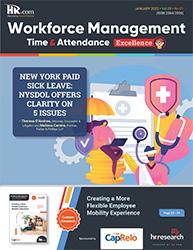
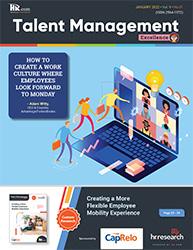
Informing, Educating, Enlightening and Assisting HR professionals in their personal and professional development, the Excellence series offers high-quality content through the publications!

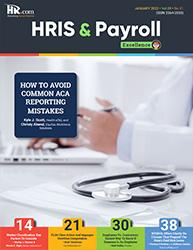



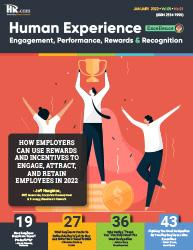





Like to submit an article? Use our online submission form or for more information go to www.hr.com/ExcellencePublications Publications















 Julie Winkle giulioni
Julie Winkle giulioni


































































